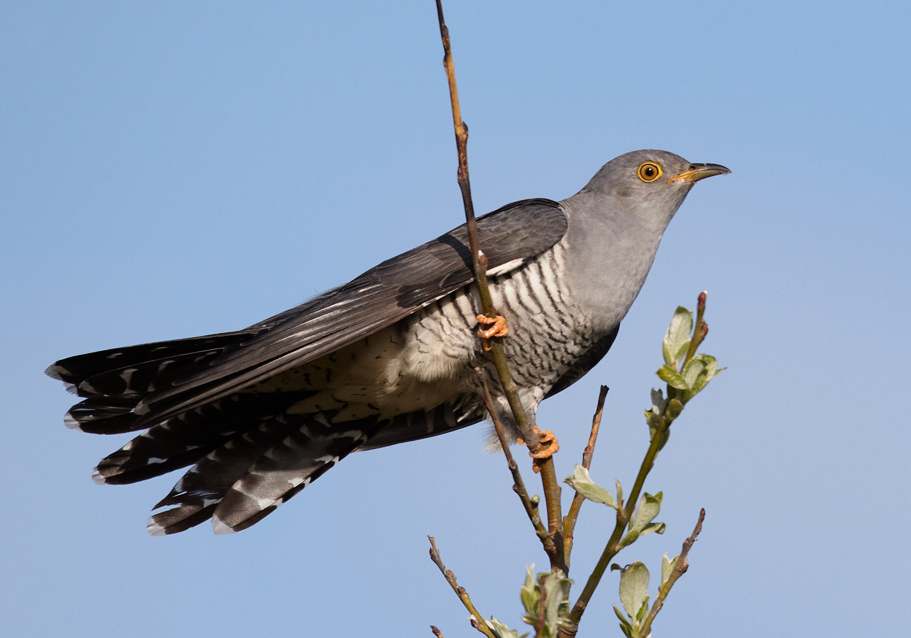“Cuckoo” has come to describe someone not fully in control of their mental state, but it has a number of other meanings that you can look up here. But today I’m going to give you the real scoop on the real cuckoo bird.

The Common Cuckoo, Cuculus canorus. Cuckoo and cuculus both reflect the bird’s call; canorus is derived from the Latin for “to sing.” Common throughout Asia and Europe during summer and winters in sub-Saharan Africa. They inhabit forests, open woodlands, grasslands, shrubby brush, wetlands, and agricultural areas.About 13 inches long and four ounces, their diet is mainly insects, especially hairy caterpillars. The bird has a slender body with long tail feathers, pointed wings, and a distinctive curved bill. The adult male is blue-gray colored on its upperparts, and the lower breast and abdomen are white with dark barring. The iris, a ring around the eye, and the base of the bill are yellow.
The Common Cuckoo is most well-known for its unusual breeding behavior known as nest or brood parasitism. Instead of building its own nest and raising young, the female cuckoo lays its eggs in the nests of other bird species, commonly small songbirds. The cuckoo’s egg often closely resembles the eggs of the host species, allowing it to blend in so the nest owners accept it as one of their own. Once the cuckoo’s egg hatches, the cuckoo chick typically pushes the host’s eggs or chicks out of the nest by positioning the egg or young on its back; the young cuckoo then extends its legs sharply and heaves the host young or egg out of the nest. This ensures that the host parents focus all their attention and resources on raising the cuckoo chick, unaware that it’s not their own offspring, even after the cuckoo chick grows to double the size of the foster parents. Each breeding season a female cuckoo will lay between 12 and 22 eggs in the nests of other birds. (She can do this in only a few seconds time.) Only about 20% of cuckoo eggs are rejected by the host birds, so the strategy is rather successful.
Common Cuckoos avoid nesting near human habitation, so other species that nest near humans are protected from nest parasitism, and some species have learned to place their nests near humans for just that reason. Worldwide, the Common Cuckoo parasitizes the nests of over 276 species of birds. But they are not alone. Nearly 300 species of birds engage in some form of brood parasitism. In North America. the Brown-headed Cowbird is a nest parasite, but the Black- and Yellow-billed Cuckoos are not. (BTW, the Yellow-billed Cuckoo is sometimes called the Rain Crow for its supposed ability to predict the weather.)
Common Cuckoos are long-distance migrants wintering in tropical Africa. Because the cuckoo is a nest parasite, there is no contact between the young and their biological parents after the egg is laid. So it seems that soon after fledging, young cuckoos travel alone on their first migration without learning from experienced birds. Observations of young cuckoos fitted with satellite transmitters showed that young birds on their first migratory journey are able to travel successfully on their own to the species’ normal wintering areas. They wander a little bit, taking less efficient routes than mature birds who have made the journey before, but learn the more efficient route by traveling back north with adult birds the next season. Using a satellite tag, scientists monitored a cuckoo that flew more than 7,500 miles from Zambia to its breeding ground in Mongolia, flying over 2000 miles across the Indian Ocean at an average speed of 36 mph.
Wow! speechless! Unusual for me. Thank you Dr Roger.